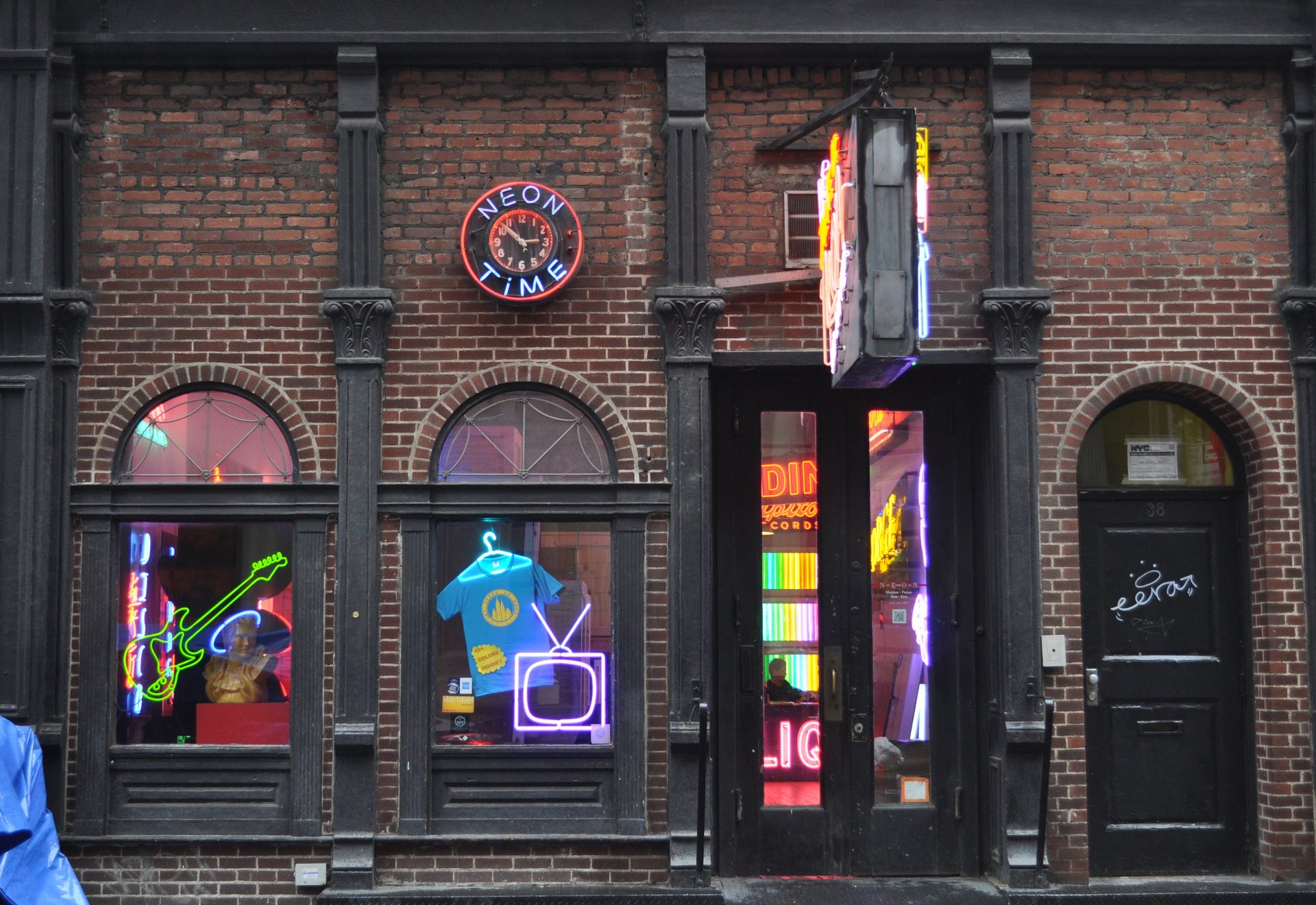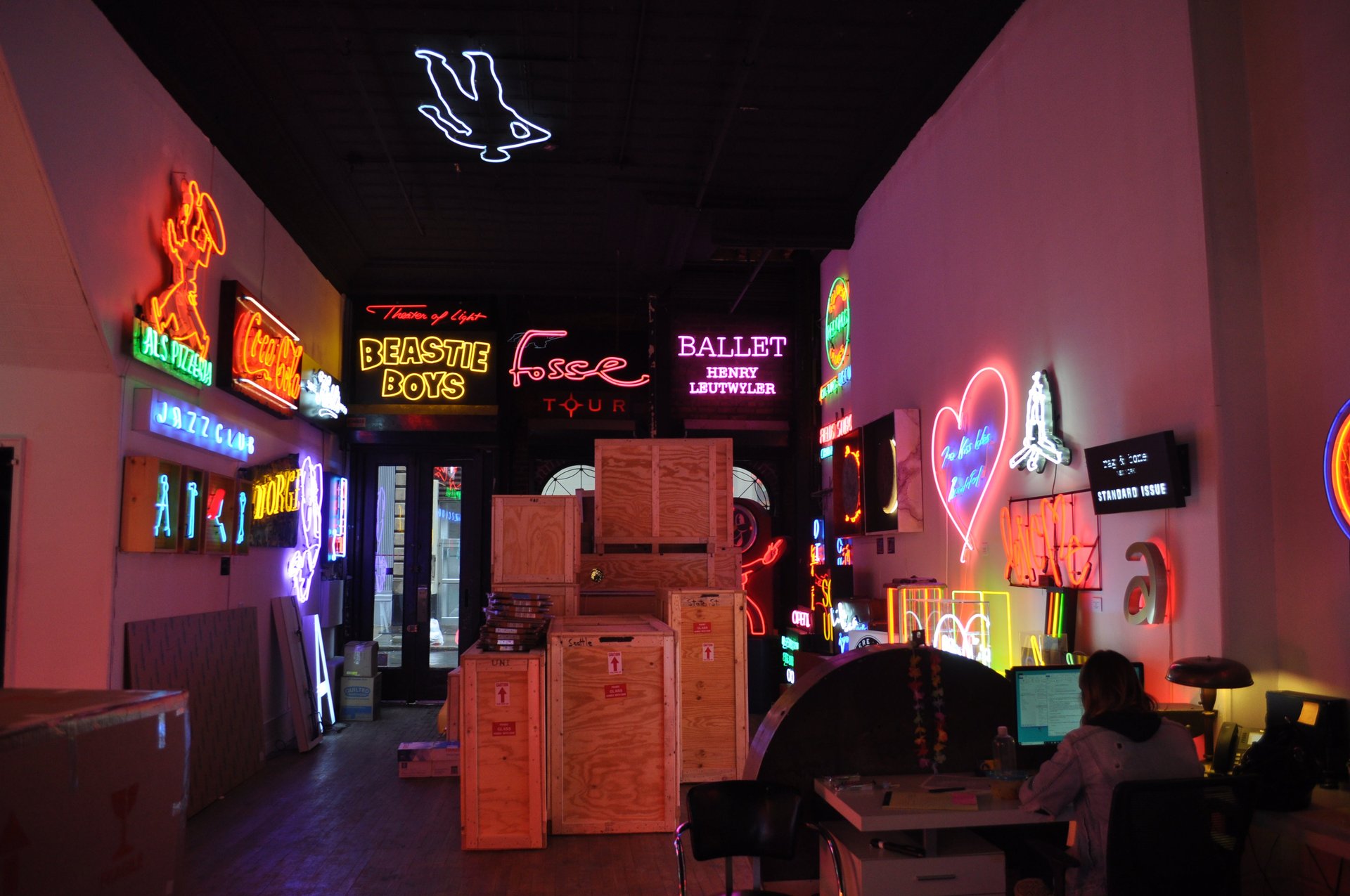A NYC shop owner says his artisan-made neon signs are more popular now than in the 1970s
You’ve probably seen work done by Let There Be Neon without knowing it. Their neon signs grace the storefronts of Sweetgreen, WeWork, and SoulCycle across the US.


You’ve probably seen work done by Let There Be Neon without knowing it. Their neon signs grace the storefronts of Sweetgreen, WeWork, and SoulCycle across the US.
Though Let There Be Neon has been around since the early 1970s, business has been booming particularly for the past 12 years (the company declined to share more specific revenue information with Quartz). “Things have been crazy busy. We can’t make it fast enough, that’s the truth,” Jeff Friedman, the company’s owner says. Part of the reason, he suspects, is that people have a new appreciation for handmade objects in an age when digitally-enabled fabrication has made consumer goods cookie-cutter and ubiquitous. “Neon’s funny because it’s such an old-school type of medium. We’ve tried to bridge the gap between the old and the new,” he tells Quartz.

The company currently employs 18 people, not including its network of neon techs distributed throughout the country. Artisan glassblowers make the signs by following computer-generated stencils in its two-floor TriBeCa workshop (the signs have to be made face-down and backwards so they read the right way when you pick them up). Then the technicians install the signs on the client’s storefront or wall almost anywhere in the US and often beyond. The clients themselves often get in touch with Let There Be Neon for a New York-based project, Friedman says, then continues working with the company as they expand to other cities.
We visited his workshop to see just how technology comes into play in this century-old medium of neon sign-making. This interview has been lightly edited for length and clarity.
In terms of technology, what’s the big thing you know today that you wished you knew when you started?
Neon is such a funny world because there’s very little that has actually changed. The biggest change, the most obvious for us, is in the layout and the artwork department, because it’s all done on computers now. It used to be done freehand. So that’s changed. And that’s also changed what the final look of the piece is, also.
We’re definitely using technology in a way that’s helping improve the speed. But it’s a funny question, because what we do is hand made. So the artwork has improved, it’s easier to order parts, the communication between us and clients and the communication between us and our technicians nationwide—technology has helped improve that.
Which tech giant has had the biggest impact on your business?
The usual players. You’ve got Amazon, which helps with orders of certain speciality items—if we’re doing a piece and we have to hang it from a ceiling and the designer might specify a very particular piece of hardware that is not typically considered sign hardware, then we might reach out [to Amazon]. You’ve got Microsoft [primarily its email software, Outlook], who we use—half of us use Microsoft products, half of us use Apple products. We’ve got our social media, which we’re very prominent in. I strongly believe that’s helped the business because it’s a visual thing. It’s a slow process, but it’s like building blocks—eventually you have a whole wall. Facebook is eh, you know. Instagram has helped a lot. We do stuff on Twitter but that’s not really for us necessarily.
A lot of materials we order from a company called McMaster-Carr. You know them? They are a catalog, now they’re an online catalog of course, of hardware. They have everything, but everything. They probably eclipse Amazon in how much we order from them. I know that sounds insane, but it’s like—boxes of screws. I need like Phillips head 632, 1 inch in length, antique bronze. McMaster-Carr has it. We order a lot of those. We used to be able to go down to Canal Street and go to Canal Hardware and get what we needed, but those days are gone. That doesn’t exist anymore.
How could I forget about Google? I use them 100 times a day for information purposes. Also, and this should go as no surprise to anybody, but when we get a new inquiry from a client, depending on who the client is, you Google them to find out who they are. People Google other people all the time. It’s kind of scary, but it’s true. But especially if it’s from a company. Who are these people? Are they legit? If you get a thing that says, “web site under construction,” that tells you one thing. If a web site is a visual presence, though, it’s very important.
What technology or tech service, that is not a giant company like Google or Apple, do you find is most useful in running your business?
We have an offsite server with an IT company. That’s something that’s new to us, and that’s helped us improve our productivity. We have this IT company that’s an offsite server. We have our accounting software on there, we have client lists, we have the field schedule [when technicians are going to install pieces], the glass-bending schedule, the current jobs schedule, so anybody can access that. We use that all the time. We have photographs of completed installations on the server. So if a client comes in and says, “I need a thing of neon cloud, do you have any photographs for references?” Done, boom, I go and get it. So that’s helped us tremendously.
From a technology standpoint, what can’t you do that you think you should be able to?
Glassbending. As much as I love our master glassbenders, that is clearly the one item in all of our production [that’s the most labor-intensive]. Because we go from ideas to artwork to full scale printouts to glassbending to assembly to installation. And the glassbending is the most laborious, because it’s the heart and soul, it’s the actual neon.
What app on your phone do you find most useful for work?
Clearly my email. There’s no question about it. I’m on email all the time. We use Outlook also because that’s what the IT [uses], it’s all tied in. My account is on my desktop at work, it’s on my two mobile devices, and it’s on my desktop at home. So wherever I am in the world, I can even log in if I have to. Outlook is the way to go.
What’s the newest competitive threat?
I don’t think there is one. Just idiocy, how’s that? That’s always a threat.
Do you think the availability of self-driving cars might change your business?
Personally, I’m for that technology. Obviously it needs work. But I think we’re closer than anybody wants to admit. The only way that it could possibly help us is in how we use vehicles now. From a New York point of view, we have our own vehicles here. We load up in the morning, we drive in the thing, the traffic is horrendous because it’s New York City. In terms of the out-of-town installations, I think on a different level it could help in the same way, shipping materials and such. It’s definitely going to happen. I think it’s going to be an improvement.
Can you imagine using bitcoin or incorporating the blockchain in your business?
I don’t think so. I know very little about that currency, but I know enough about it to know… I don’t see the advantage for us. If it becomes more standardized, then it’s something that we would take on only because it would be necessary to do so. It means nothing else to us. I can’t see any reason from a financial point of view how it could be an advantage. The dollar still is the dollar worldwide.